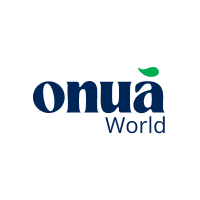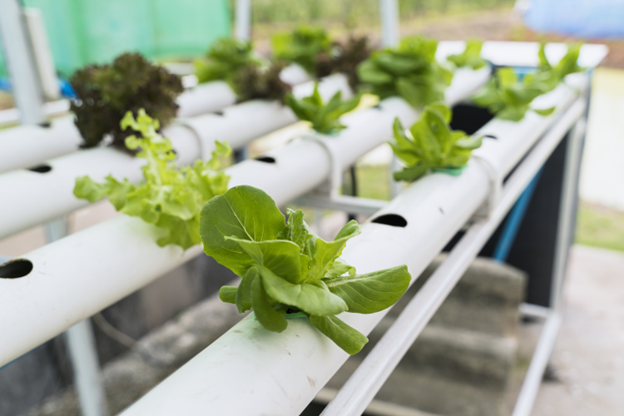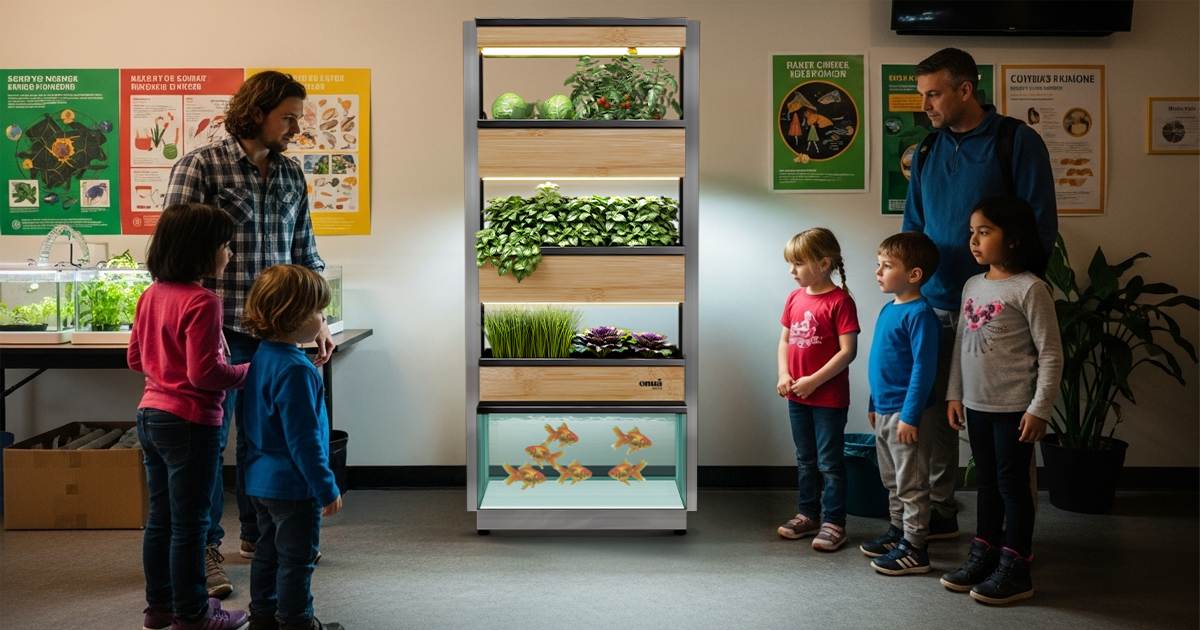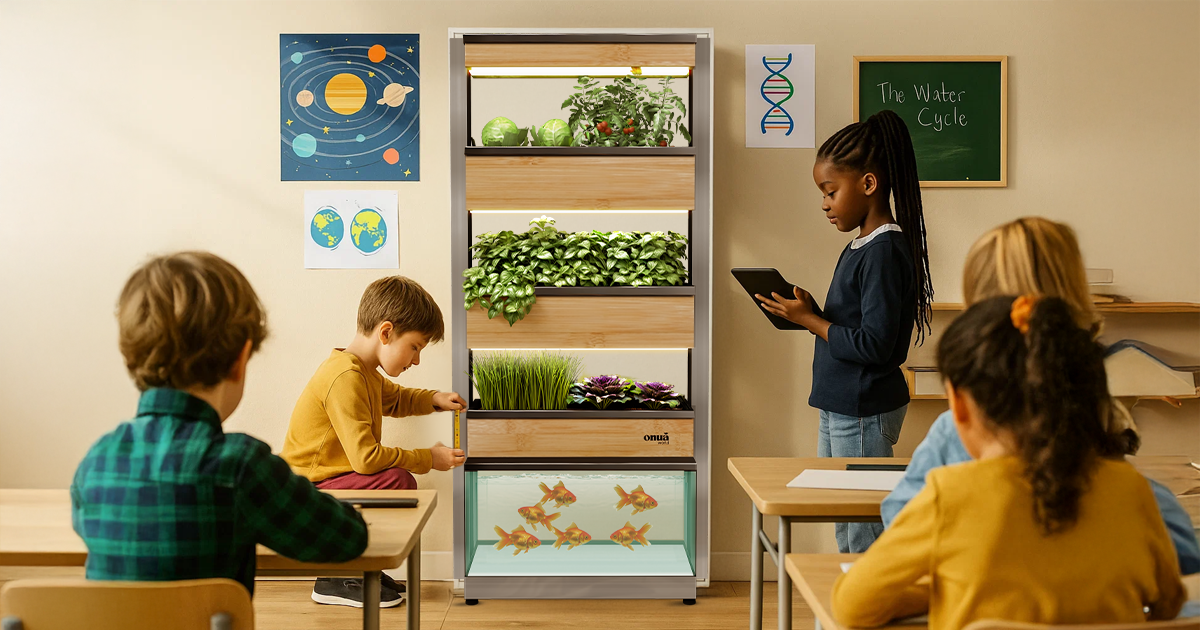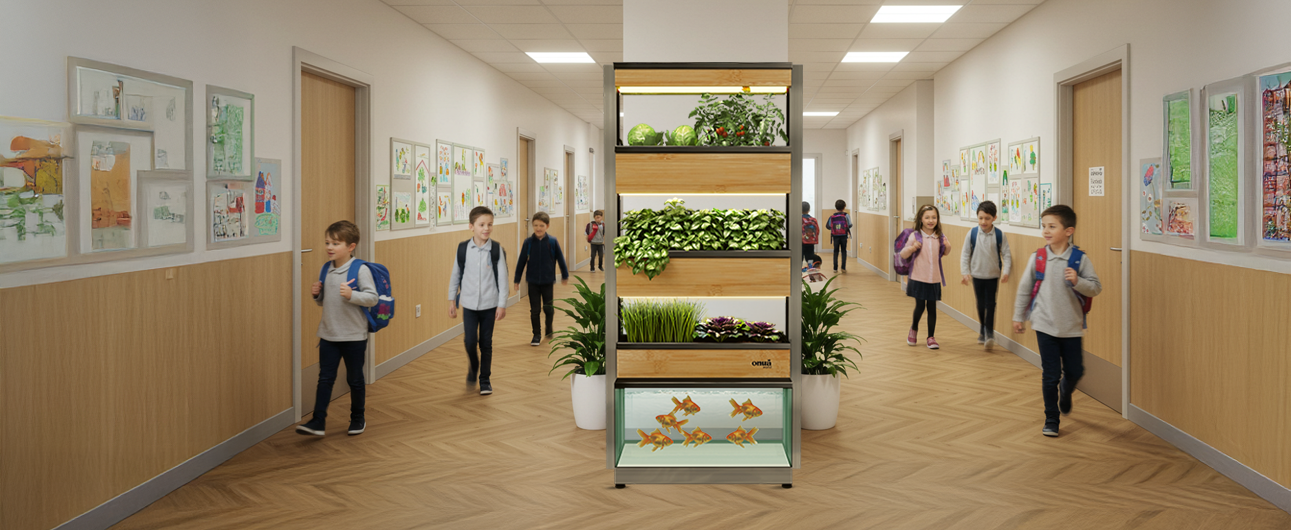Aquaponics is an innovative cultivation method that combines aquaculture (fish farming) with hydroponics (soilless plant cultivation) to create a sustainable and eco-friendly food production system. In this system, fish waste serves as fertilizer for plants, while plants filter and purify the water for the fish. Aquaponics offers numerous advantages, including reduced water consumption, the absence of chemical use, and rapid plant growth. Four main methods are commonly used in aquaponics: raft, nutrient film, substrate bed, and Onuà World's innovative system. In this article, we will delve into these methods in detail.
1. Raft (or Floating System):

The raft system is one of the simplest and most popular methods in aquaponics. It involves a series of rafts floating on the water, each carrying plants. The plant roots dangle in the water, absorbing the necessary nutrients for their growth. Fish are raised in a tank located below the rafts, and water rich in nutrients circulates between the fish tanks and the rafts. The plant roots filter and purify the water before it returns to the fish tank.
The advantage of the raft system lies in its simplicity. It is easy to set up and maintain, making it an ideal option for aquaponics beginners. Additionally, it provides an ideal environment for plants with constant access to nutrients. However, it may be less suitable for certain plant varieties that prefer a more stable environment.
2. Nutrient Film (or NFT - Nutrient Film Technique):
The nutrient film system is another commonly used method in aquaponics. It relies on an inclined channel system where water flows in thin nutrient films. Plants are placed in these channels, with their roots continuously bathed in the nutrient film. Nutrient-rich water comes from the fish tank and flows through the channels, providing a constant food source for the plants. See the first image in this article.
This method is valued for its high efficiency and its ability to promote rapid plant growth. However, it can be more complex to set up and maintain than the raft system. Additionally, if the pump that feeds the system fails, plants may quickly dry out because they depend on a continuous water and nutrient supply.
3. Substrate Bed:
The substrate bed is an aquaponics method that employs a solid growing medium to support plants. In this system, plants are placed in beds of substrate, such as peat, perlite, or expanded clay pellets. Plant roots grow within the substrate, absorbing nutrients present in the water that flows through the bed.
One of the advantages of the substrate bed is its versatility. It allows for the cultivation of a wide variety of plants, including those that prefer a more stable environment. Moreover, it offers some tolerance in case of technical issues, as plants can survive for a period without a continuous water supply. This method also served as inspiration for Onuà World's garden, which chose the substrate bed in aquaponics.
Onuà World turned to the substrate bed in aquaponics for its simplicity and low maintenance requirements. This method also provides greater flexibility in cultivating a wider variety of plants. It is an ideal choice for those seeking a less demanding approach to maintenance while fully benefiting from the advantages of aquaponics.
Conclusion:
Aquaponics is an innovative cultivation method with numerous benefits, including reduced water consumption, rapid plant growth, and the production of fresh fish. Among the four main methods used in aquaponics—raft, nutrient film, substrate bed, and Onuà World's innovative system—each has its own advantages and disadvantages. The choice of method depends on the specific needs of your project, your aquaponics skills, and your personal preferences. Whatever method you choose, aquaponics offers a sustainable solution for food production that deserves exploration and development. So, whether it's rafts, channels, substrate beds, or innovative systems, dive into the exciting world of aquaponics!
